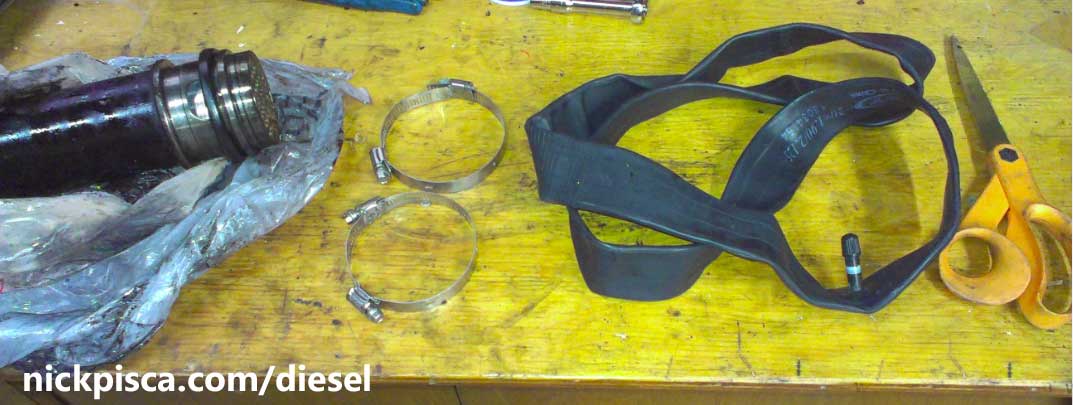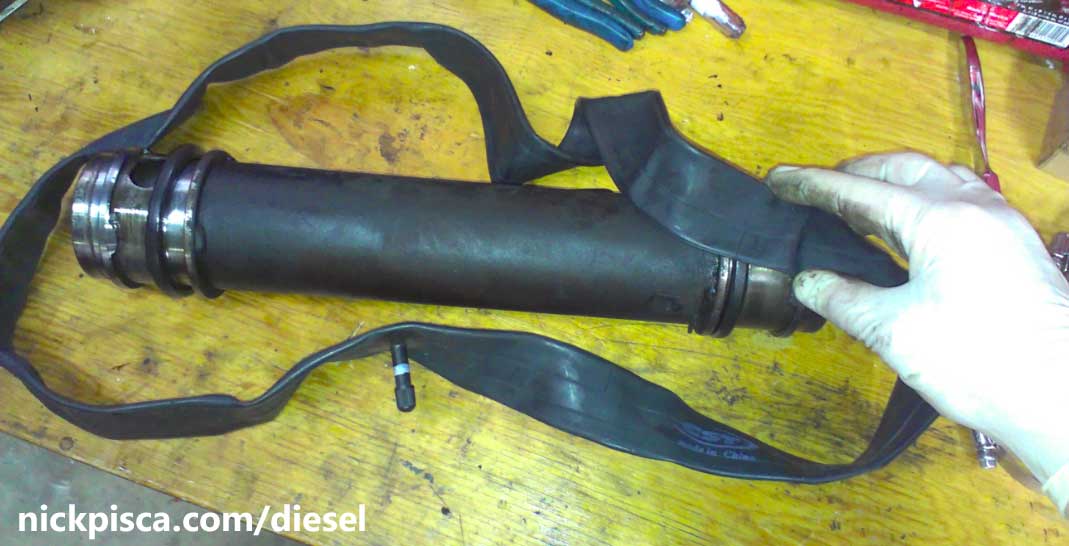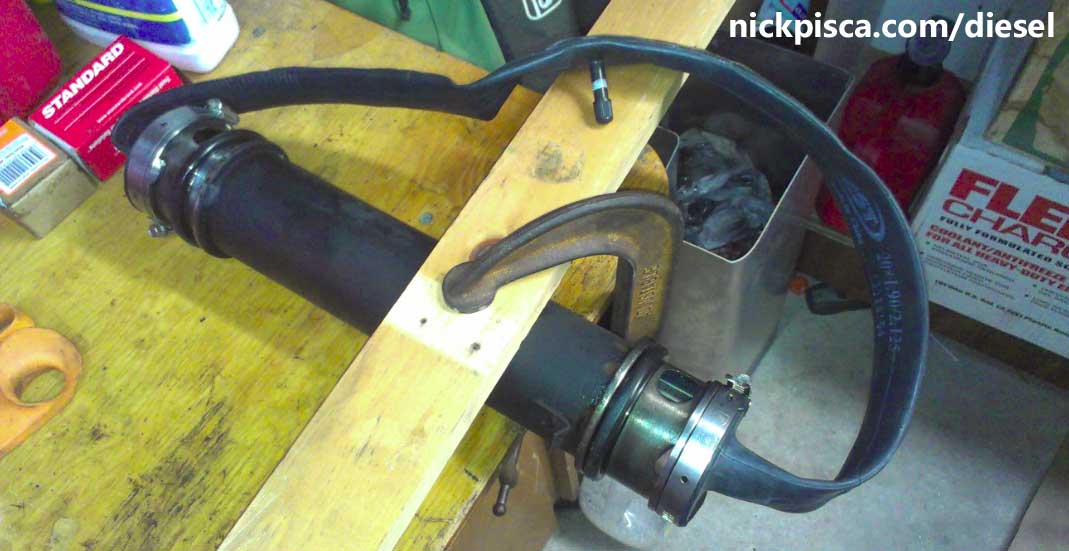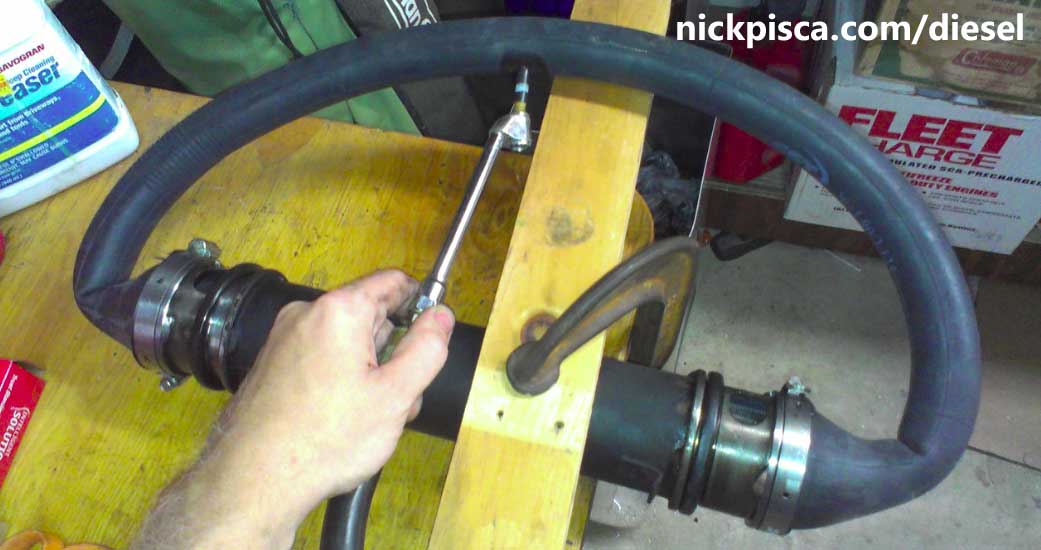I got sick of looking for a place that could “test” my oil cooler, so I made my own testing apparatus.
Maybe the rest of you have knowledgeable Diesel mechanics in your town who know what an oil cooler is. I live in LA, so there isn’t a knowledgeable person in 100 miles. I couldn’t deal going to a shop or parts store and handing my oil cooler to a pimply tin-grin know-nothing who was trained to ask only, “what make and model?”
I like this DIY testing setup, because it’s very simple. I thought of many different ways to do this, but I think this is the cheapest and easiest.
All you need is…. Wait. Read this first:
I assume no responsibility for whatever you do with this DIY process or for anyone who is working for/with you. If you injure yourself or damage your vehicle, I and anyone with which I’m affiliated won’t assume any responsibility. You are completely responsible for your own actions. This procedure is for novelty use only. Conduct this process at your own risk.
Preparation:
All you need is:
Your oil cooler, some large hose clamps, a child’s BMX innertube, a scissors, and some 3/8″ fuel hose (not pictured).

You want an innertube that is bigger than the oil cooler. The one in this picture is way too big, so I’ll have to cut it down.

Cut the innertube with enough slack to stretch the open part of the tube over the ends of the oil cooler. Only stretch the innertube over the very end of the oil cooler. Do NOT stretch it over the holes in the sides of the cooler, otherwise this DIY process will be useless.
Once the innertube is stretched around the oil cooler, place a section of fuel hose between innertube and clamp. This protects the innertube from breaking once you tighten the clamps. (i cut my fuel hose in half the long way)

Make sure to have the schrader valve in the MIDDLE of the innertube. Don’t cut the innertube near the valve. Once everything is tight, fill the inner tube with air.

I filled my innertube so much that it was probably 6″ in diameter. I don’t have a working air pressure gauge on hand, but if you have one, you can check your pressure with the conveniently placed schrader valve. This is not really a high pressure test; it’s just to tell you if you have a leak.
If you have a large cooler leak, you will hear hissing. If you have a small leak, you may not hear anything.
I’m going to let my inflated tube sit overnight. If it slowly loses air, then I’ll put the whole thing in a full bathtub and look for air. If it has a leak, you will see a small stream of bubbles emitting from the offending rupture. (If you submerge your oil cooler in water, you will want to let it dry for a LOOOOOOOOONG time before putting it back on your engine.)

